Here are more photos for you to study and enjoy. Remember to zoom in for details. Remember, too, that quality prints can be ordered of these and many more. Just contact Kevin Johnson, Photo Archivist, Penobscot Marine Museum.
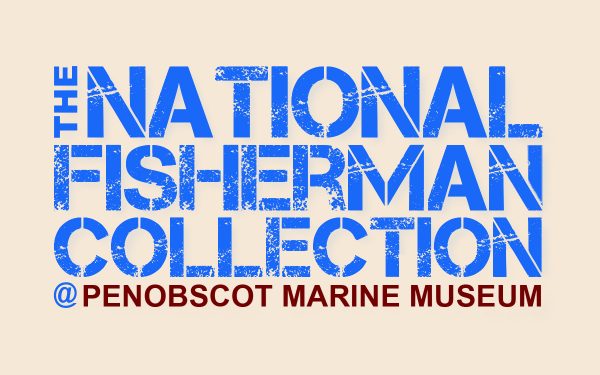
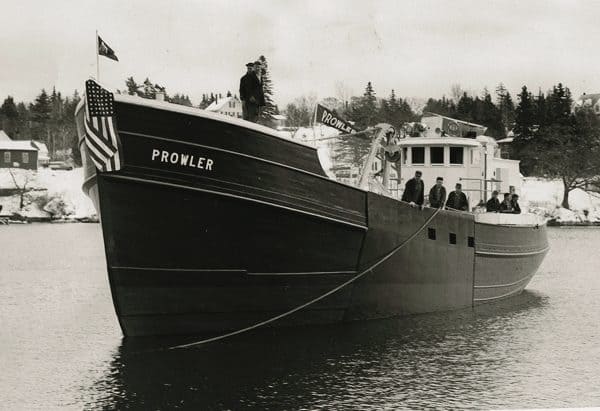
PROWLER launching, 1960. Soon to be dragging for scallops, the handsome wooden-hulled PROWLER has just been launched from the Gamage yard in South Bristol, Maine. Before leaving, she’ll be brought dockside for completion, including stepping her two masts. (LB2012.15.153 From the March, 1960 National Fisherman.)
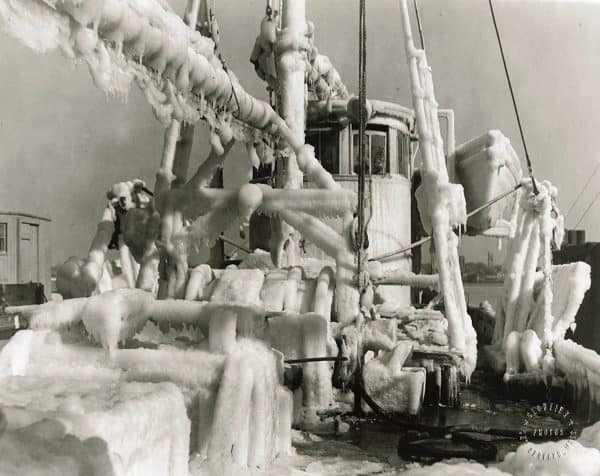
Iced up. Diving and pitching into a wintertime nor’wester—with the spray flying and freezing, and building up layer upon layer of ice—makes the vessel increasingly top-heavy and the trip home inreasingly dangerous. It’s a relief when draggers like MARY R. MULLINS arrive safely despite the ice. This undated photo was taken in New Bedford, MA, and the vessel was launched at Friendship, ME, in 1924. (LB2012.15.231 Photo by Raymond Cloutier)
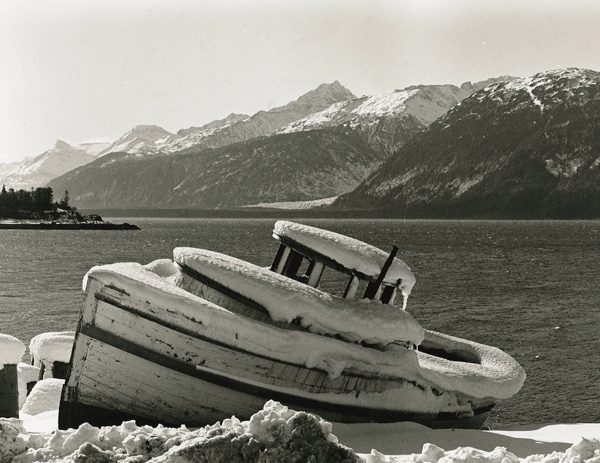
Abandoned to Winter. A salmon troller left to rot away somewhere in the Pacific Northwest, most probably Alaska.(LB2012.15.318 Photo undated.)
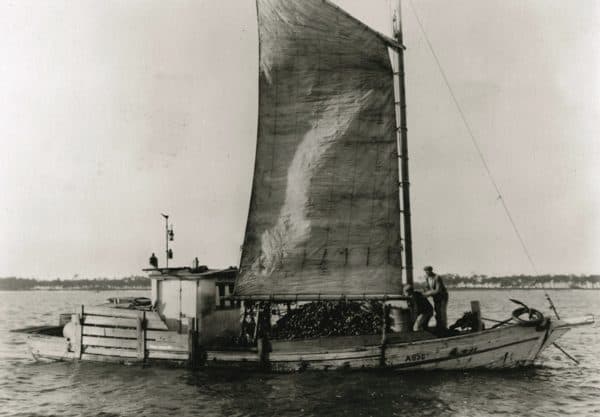
Oystering off Biloxi. Rigged for motoring and limited sailing, a Mississippi dredge boat takes on a deck load of oysters before heading for the shucking house.(LB2012.15.143 From the 1989 National Fisherman Yearbook, page 97 & Mississippi Dept. of Archives & History.)
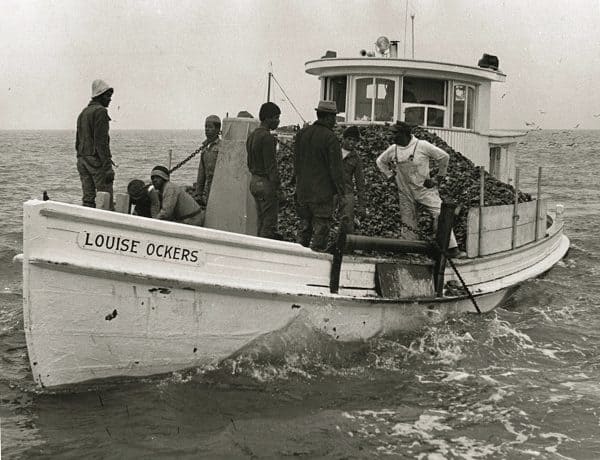
LOUISE OCKERS Dredging for Oysters, 1973. Already piled high, but still dragging the western Long Island Sound bottom for more, this handsome old round-sterned vessel will soon head to shore for unloading. She was built by William Bedell of Stratford, CT, in 1927 and may, on this day, have a group of observers aboard. (LB2012.15.138 From the August, 1973, National Fisherman, page 1-A)
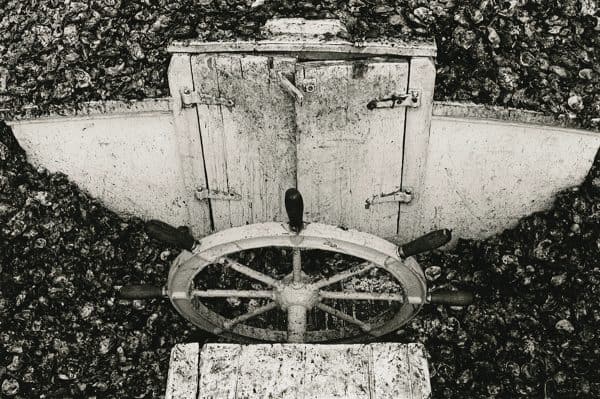
Good Oystering, 1971. You know you’ve done well when you land this many Chesapeake oysters. (LB2012.15.145 Robert de Gast photo from the February, 1971 National Fisherman, page 1-C.)
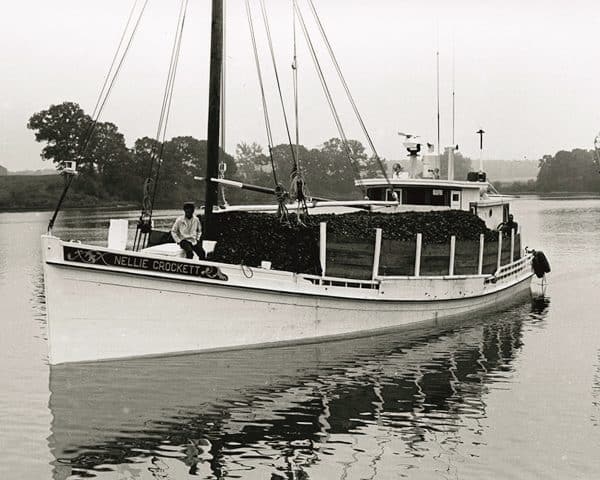
NELLIE CROCKETT, 1993. So loaded with shells that her skipper can barely see out the wheelhouse windows, this grand old buy boat is no doubt about to head out to reseed her Chesapeake Bay oyster beds. (LB2012.15.297 From the September, 1993 National Fisherman, page 35.)
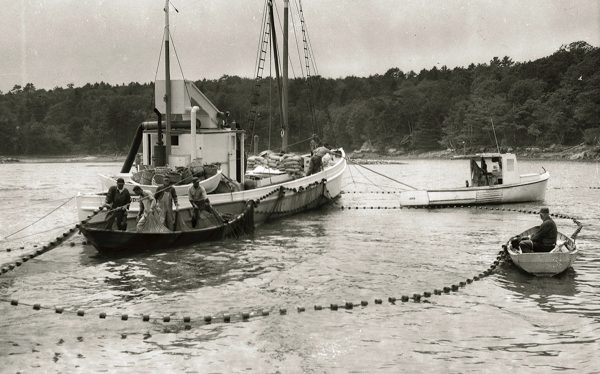
Stop Seining, c1970. Working in the dark of the night, seiners shut off this cove to keep the herring from escaping, then radioed for a sardine carrier to deliver them to the factory for processing: the cleaning, cooking and canning that transform herring into sardines. Now that it’s daylight, they have concentrated the fish with a purse seine, and one of them hauls in on the purse line to pucker up the net for pumping. (LB2012.15.137 E.L. Boutilier photo)
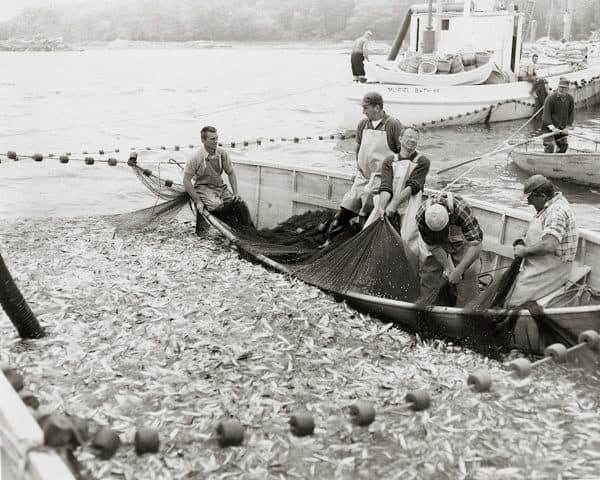
Pumping Out The Purse Seine c1970. This crew from New Harbor, ME, pursed 60,000 bushels of herring from Greenland Cove, only a few miles from their homeport. The carrier in the background (MURIEL) awaits her turn while another sardine carrier, whose suction hose shows at left takes aboard her load. MURIEL was built in 1918 in nearby East Boothbay. Renamed AMARETTO in 1976 when Joe Upton purchased her, she became the subject of and the title to his book about the sardine industry. On Sept. 20, 1985, AMARETTO was stolen, scuttled, and lost in 120 feet of water two miles east of Monroe Island off Owls Head, ME. (LB2012.15.34 E.L. Boutilier photo from the 1990 National Fisherman Yearbook, page 57.)
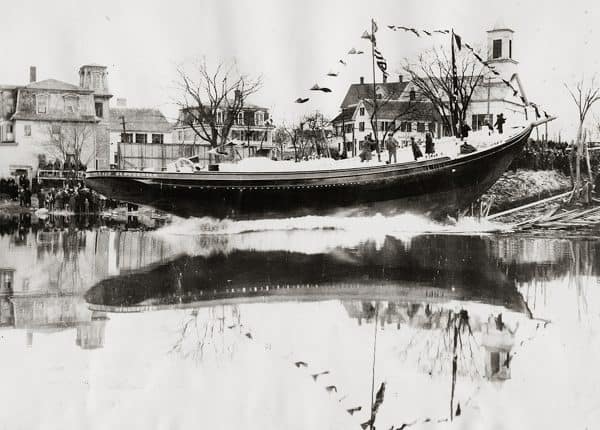
Gloucester Fishing Schooner GERTRUDE L. THEBAUD Launching, 1930. She slid down Arthur Story’s launching ways in March and like her predecessors was immediately towed to Gloucester for outfitting. Then, with a crew of 25 and with a dozen or more dories stacked on deck, she’ll sail away for the Grand Banks, set out her dories so their two-man crews could hand-line for cod. The schooner would then sail home with a load of cleaned and salted fish. The fishermen from Lunenburg, Nova Scotia were fishing the same way in similar vessels, so races between the two countries near the end of the era came as no surprise. The THEBAUD went up against BLUENOSE, Canada’s pride-and-joy, in the fall of 1930 but lost. (LB2012.15.47 International News Photo from the 1975 National Fisherman Yearbook, page 3.)
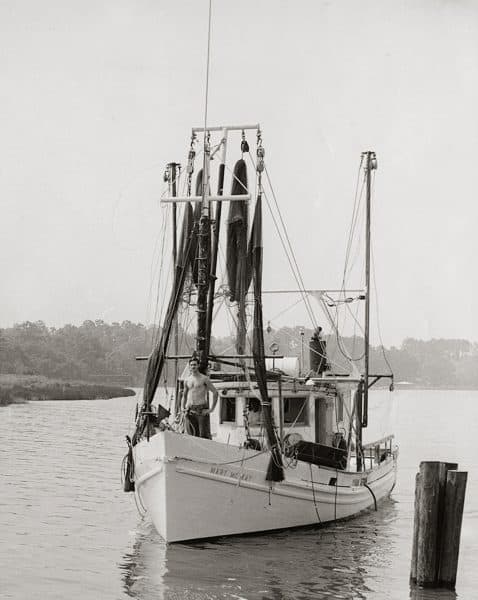
The Shrimp boat MARY MCKAY. Built Biloxi, Mississippi, in 1953 and owned in Mobile, AL, she dragged a fine-mesh net from each of her outriggers, when lowered, and scooped up shrimp. (LB2012.15.99 From October, 1973 National Fisherman, page 18-A.)
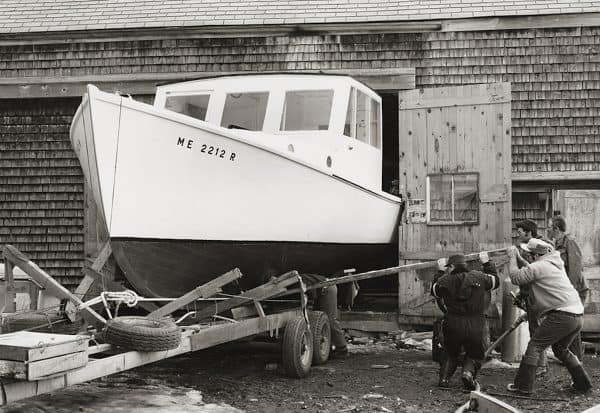
Squeezing Through, 1975. LISA A, at 8 inches wider than the door opening, presented a challenge. But a chainsaw and ax soon solved that problem. Soon afterwards, helped by a gang on the end of a pry bar, a winch, and some rollers, out she came and up onto her trailer, soon to be towed away for launching. Carter Brothers’ Boatyard built this 36-footer in a former cow barn in West Waldoboro, ME, in 1976. (LB2012.15.92 E.L. Boutilier photo from the June, 1975 National Fisherman, page 9-C.)
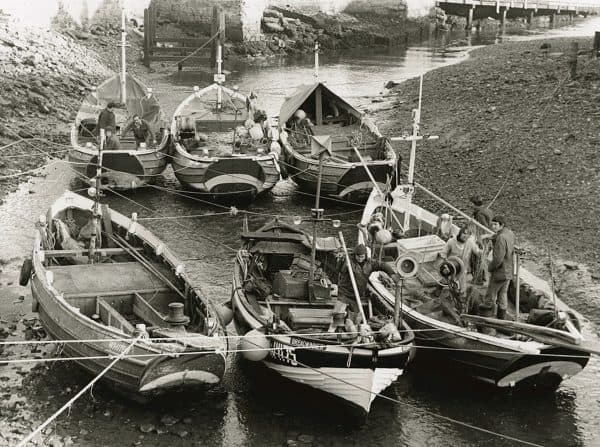
Grounded at Staithes, 1980. Five Yorkshire cobles and a lapstrake double-ender, all motorized but with a sailing heritage, lie aground in the stream, well secured for when the tide refloats them. At other ports that are blessed with sandy beaches, boats like this are hauled out at the end of each day by tractors on individual trailers. (LB2012.15.208 From the 1981 National Fisherman Yearbook, page 197. Photo by Michael Moore.)
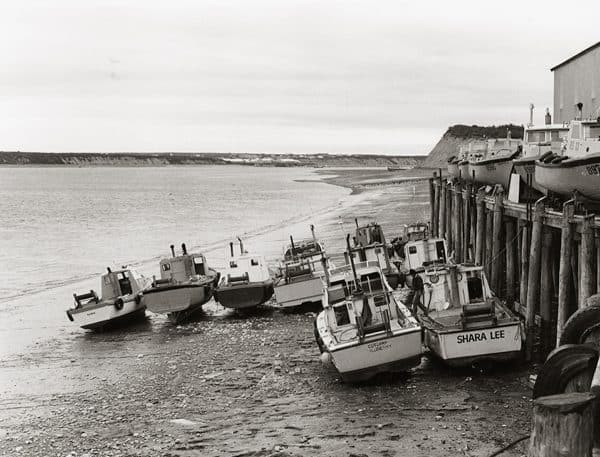
Low Tide on the Naknek River. Eight small inshore fishing boats are being readied for the summer season at the Red Salmon Cannery dock on Alaska’s Bristol Bay. The tide range here is over 20 feet, so the boats float when the tide is up and lie in the mud when it’s down. (LB2012.15.102 From the September, 1979 National Fisherman, page 37. Photo by Bruce J. Cole.)
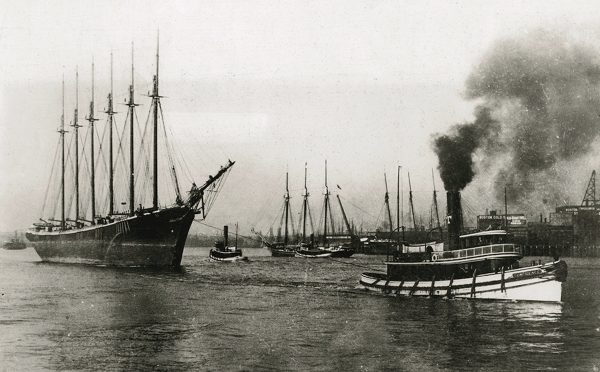
ELEANOR A. PERCY Under Tow, 1906. Having delivered some 5,000 tons of coal, this big, ungainly schooner heads out of Boston Harbor on the first leg of another run to Hampton Roads near the mouth of Chesapeake Bay for more. Coal fed the fires of industrial New England, peaking after the Civil War. The demand proved to be a boon for Maine shipbuilders as they turned out big wooden, coal-carrying schooners. Launched from the Percy & Small Shipyard in Bath, ME, in 1900, this six-master is one of the largest ever built, with a length on deck of 347′ and a beam of 50′. Vessels like her kept steam tugs like CONFIDENCE continuously on the go. (LB2012.15.237 From the November, 1979 National Fisherman, page 36.)
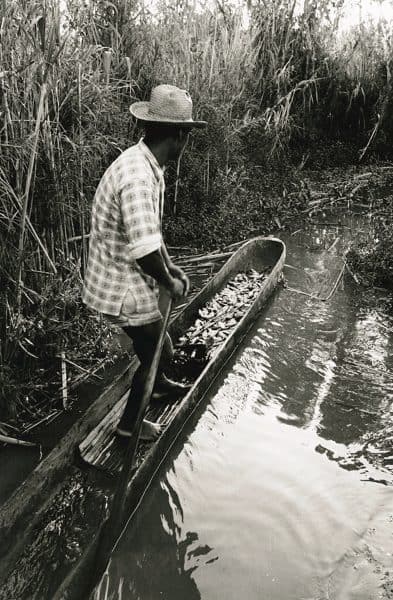
Native Fisherman Poling a Dugout, 1965. A Madagascar fisherman returning to his village of Anororo with fish caught in Lake Alaotra. (LB2012.15.271 FAO Photo from a 1984 issue of National Fisherman.)
Continue to Part 7
In 2012, Diversified Communications of Portland, ME, donated National Fisherman magazine’s entire pre-digital photographic archive to the Penobscot Marine Museum (PMM). Although the Museum has Fair Use rights to the images, responsibility for determining the nature of copyright and obtaining permissions to publish, transmit or reroduce these materials rests entirely with the researcher.
. . . sign up to the right to get immediate access to this full post,
plus you'll get 10 of our best videos for free.
Get Free Videos& Learn More Join Now!!for Full Access Members Sign In


Chris Heape says:
Great pics! Thank you!
David Tew says:
Re STOP SEINING: I worked for Port Clyde Sardines for a summer job one year. One of the more interesting aspects of stop seining was the suction hose mentioned for emptying the net of its catch. The fish were pumped through a revolving, screened tube on their way to the hold. The scales of the fish were saved in the resulting slurry and sold as an additive to lipstick and nail polish producers. The scales were crushed to provide the iridescent component of those embellishments.
Chris Noto says:
Thanks, Kevin! It’s always worth taking a moment to check out what’s new at OCH.com. 👍